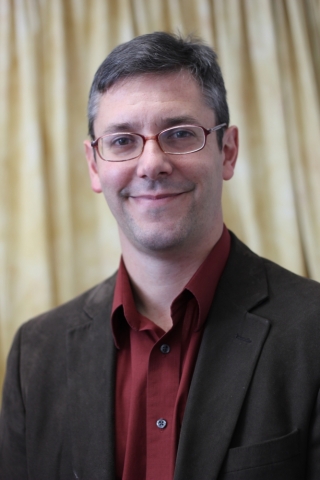
Date:
Location:
Speaker:
Abstract:
In this presentation I will discuss different approaches for the production of renewable fuels and chemicals that are being developed both inside and outside the Huber research group. The objective of the Huber research group is to develop new catalytic processes and catalytic materials for the production of renewable fuels and chemicals from biomass, solar energy, and natural gas resources. We use a wide range of modern chemical engineering tools to design and optimize these clean technologies including: heterogeneous catalysis, kinetic modeling, reaction engineering, spectroscopy, analytical chemistry, nanotechnology, catalyst synthesis, conceptual process design, and theoretical chemistry. We will highlight some of the challenges and future opportunities for future process development and design of new catalytic approaches. I will show that all the same fuels and chemicals that are made from petroleum can be made from renewable biomass resources.
Hydrodeoxygenation (HDO) is a platform technology used to convert liquid biomass feedstocks (including aqueous carbohydrates, pyrolysis oils, and aqueous enzymatic products) into alkanes, alcohols and polyols. In this process the biomass feed reacts with hydrogen to produce water and a deoxygenated product using a bifunctional catalyst that contains both metal and acid sites. The challenge with HDO is to selectively produce targeted products that can be used as fuel blendstocks or chemicals and to decrease the hydrogen consumption. I will discuss how to design improved non-precious metal catalytic materials to selective produce both liquid transportation fuels and higher value commodity chemicals from biomass using catalysts designed by atomic layer deposition (ALD). ALD is an emerging tool that allows to synthesize heterogeneous catalysts at the atomic level. I will discuss examples where the atomic precision has been used to elucidate reaction mechanisms and catalyst structure-property relationships by creating materials with a controlled distribution of size, composition, and active site.
We recently reported a new approach to produce levoglucosenone (LGO) from cellulose in yields up to 51% under mild reaction conditions (170-230 °C; 5-20 mM H2SO4) using polar, aprotic solvents such as tetrahydrofuran (THF). LGO can be used to make a wide variety of chemicals from biomass and has been termed the next HMF. The water content and solvent used in the reaction system control the product distribution. LGO is produced from the dehydration of levoglucosan (LGA). LGA is produced from cellulose depolymerization.
We believe that new catalytic conversion technologies have a tremendous potential for the production of renewable fuels and chemicals. As will be demonstrated in this presentation chemistry, chemical catalysis and chemical engineering are critical 21st century needs to help make renewable energy a practical reality.
Bio Sketch:
George Huber is the Harvey Spangler Professor of Chemical Engineering at University of Wisconsin-Madison. His research focus is on developing new catalytic processes for the production of renewable liquid fuels and chemicals.
George is one of the most highly cited young scholars in the chemical sciences being cited over 3,200 times in 2014 and over 15,000 times in his career. He has authored over 100 peer-reviewed publications including three publications in Science. Patents and technologies he has helped develop have been licensed by three different companies. He has received several awards including the NSF CAREER award, the Dreyfus Teacher-Scholar award, fellow of the Royal Society of Chemistry, and the outstanding young faculty award (2010) by the college of engineering at UMass-Amherst. He has been named one of the top 100 people in bioenergy by Biofuels Digest for the past 3 years. He is co-founder of Anellotech (www.anellotech.com) a biochemical company focused on commercializing, catalytic fast pyrolysis, a technology to produce renewable aromatics from biomass. George serves on the editorial board of Energy and Environmental Science, ChemCatChem, Energy Technology, and The Catalyst Review. In June 2007, he chaired a NSF and DOE funded workshop entitled: Breaking the Chemical and Engineering Barriers to Lignocellulosic Biofuels (www.ecs.umass.edu/biofuels).
In summer of 2015, George did a sabbatical visit with Professor Tao Zhang at Dalian Institute of Chemical Physics. George did a post-doctoral stay with Avelino Corma at the Technical Chemical Institute at the Polytechnical University of Valencia, Spain (UPV-CSIC). He obtained his Ph.D. in Chemical Engineering from University of Wisconsin-Madison (2005). He obtained his B.S. (1999) and M.S.(2000) degrees in Chemical Engineering from Brigham Young University.



